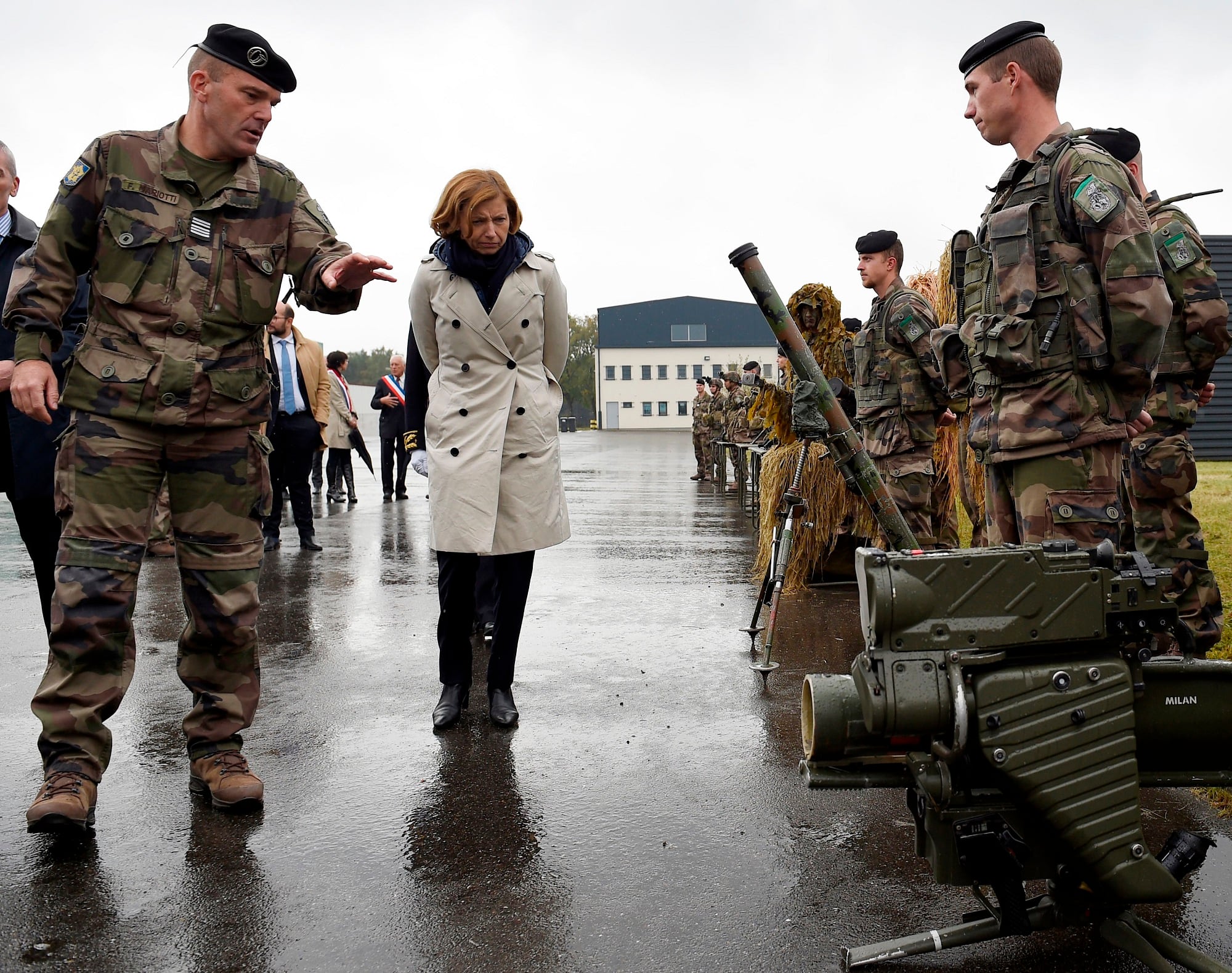PARIS — The French Armed Forces Minister called July 23 for industry to play a greater role in servicing heavily used military vehicles, with companies called to support 40 percent of the mixed fleet by the middle of the next decade.
Speaking at Bruz, a base for vehicle support in western France, Minister Florence Parly said the service goal compares to the present 15 percent, with a target of 2025.
The minister announced a “transformation plan” for vehicle support based on an official report by defense procurement official Vincent Imbert and Army Gen. Bernard Guillet.
"The improvement of our maintenance process and availability of our equipment is one of my priorities,” she said.
That call for greater support reflects problems in servicing a highly mixed fleet, including new-generation armored vehicles to be delivered in the Scorpion program, modern VBCI infantry fighting vehicles and Caesar truck-mounted artillery, and an aging park of VAB troop carriers and VBL scout cars.
The plan seeks to boost the availability of vehicles by restructuring the industrial and technological base for service, boost a sense of responsibility of the personnel using the vehicles, and reshaping links between the armed forces and industry, the ministry said in a briefing note. There are also plans to increase local support in the deployed theaters and adopt new technology in monitoring and predicting breakdowns.
There is a high availability of more than 90 percent for vehicles in overseas operations, but those vehicles return to France in poor condition, with only 65 percent of the various fleets available for use once back on national territory, the ministry said. That availability varies greatly depending on the type of vehicle.
That means there is a lack of vehicles for training troops for deployment. Some 3,500 vehicles are broken down and there is a lack of capability to reduce that number. The British and German forces face similar problems, with lower availability and lack of an organization to improve the situation, the ministry said.
The modernization plan calls for closer ties between government maintenance organizations, the armed forces and manufacturers including Arquus, Nexter, Safran and Thales, as well as specialist NSE and small- and medium-sized enterprises, the ministry said. Those actors should use more efficient tools and methods, and cut out duplication and waste of resources and time.
RELATED

The official report pointed up a “lack of sense of responsibility” of the users as the vehicles are held in pools rather than assigned specifically, a contrast to an attachment of Air Force and Navy personnel who are closely tied to their aircraft and ships.
Companies showed a weak link with service support in the land sector, also in contrast to ties seen between industry and the naval and aeronautical sectors, the report said.
There should be greater use of new technology, adopting 3D printing and the use of health and usage monitoring systems (HUMS) to predict breakdowns, the report said. Development under the Scorpion program offered industry an opportunity not to be missed to incorporate such technology.
The report called for equipment which was beyond repair to be handed over to industry to repair and resell, with the money to be shared between the government and industry.
"This reform requires a mobilization and a greater responsibility of industry in their performance and their capacity to honor the client’s needs, whose objective is both to be effective on the ground and to guarantee the safety of soldiers,” Parly said.
Some 13,000 personnel are employed on vehicle service, with 11,000 in the armed forces. The balance is split between two government organizations — SMITer and SIMMT. The latter awards service contracts to companies.
Some €1 billion (US $1.2 billion) has been earmarked for land vehicle service in the 2019-2015 defense budget law.
A plan to improve service of land vehicles follows a program for improved support for military aircraft.








